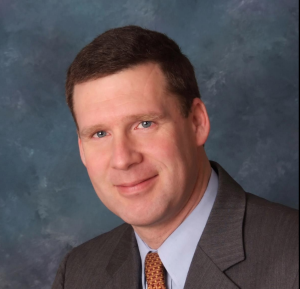 A Cat Fight and a Peacemaker
A Cat Fight and a Peacemaker
A few days ago I was coming home and I noticed that two of our neighbors’ cats were posturing themselves for a major cat fight. I knew that bloodshed was imminent. I could not just turn the other way and just let this happen. Turning the other way and pretending not to see problems and being unwilling to work for viable solutions seems to be normative in our culture. But I have chosen to be a person of action. I got out of my car and stood between the cats and said to them, “Okay you two just settle down. You guys are not going to fight today.” Then I picked up Mabel, our next door neighbor’s cat, and made her go home.
Unbeknownst one of my neighbors was watching this whole drama. He started laughing at me and said, “There goes the peacemaker. He just can’t help himself. He’s always honing his skills. Even if it’s with cats.” I smiled back at him and said, “I’m just trying to prevent bloodshed.”
A Catalyst For Peace
Most people who know me identify me as a life coach and a peacemaker. I prefer to see myself as more a catalyst for peace than a peacemaker. I bring people and resources together, and once they are working together as friends for the common good I move on. I am constantly looking for win/win solutions and how people who are stuck in polarized positions can become friends and build a better future together.
As I blog I want to bring you fresh perspectives on important issues and provide you with practical resources for your consideration so that you can make better informed decisions. I am not asking you to agree with everything I say, but to be willing to listen to differing opinions and perhaps work with others who are different from you to create a better reality. A reality that could not have been created through ideological conformity and intellectual polarization. Albert Einstein reportedly said, “The significant problems we have cannot be solved at the same level of thinking with which we created them.” I believe Einstein would include the current Syrian refugee crisis if he were here today.
The controversial subject of the U.S. taking in more Syrian refugees is an issue that is dividing our country. Good and intelligent people on both sides have strong opinions and convictions as to what our nation should do. I submit to you an opinion of someone who is worthy of your consideration.
An Immigration Attorney Weighs In

Scott Hicks, is an immigration attorney and Christian minister. As someone who is an expert in Immigration law and part of the vetting process for refugees coming into this country he gives us a unique perspective on how the process of entry actually works. Also, he also addresses the validity of the security concerns around the refugee vetting process for the U.S. I hope you find his letter that he posted on Facebook helpful. Thank you Scott for being willing to let me post your comments.
* * * *
Most of my friends know I practice Immigration law. As such, I have worked with the refugee community for over two decades. This post is long, but if you want actual information about the process, keep reading.
I cannot tell you how frustrating it is to see the misinformation and outright lies that are being perpetuated about the refugee process and the Syrian refugees. So, here is a bit of information from the real world of someone who actually works and deals with this issue.
The refugee screening process is multi-layered and is very difficult to get through. Most people languish in temporary camps for months to years while their story is evaluated and checked.
First, you do not get to choose what country you might be resettled into. If you already have family (legally) in a country, that makes it more likely that you will go there to be with family, but other than that it is random. So, you cannot simply walk into a refugee camp, show a document, and say, I want to go to America. Instead, the UNHCR (United Nations High Commissioner on Refugees) works with the local authorities to try to take care of basic needs. Once the person/family is registered to receive basic necessities, they can be processed for resettlement. Many people are not interested in resettlement as they hope to return to their country and are hoping that the turmoil they fled will be resolved soon. In fact, most refugees in refugee events never resettle to a third country. Those that do want to resettle have to go through an extensive process.
Resettlement in the U.S. is a long process and takes many steps. The Refugee Admissions Program is jointly administered by the Bureau of Population, Refugees, and Migration (PRM) in the Department of State, the Office of Refugee Resettlement (ORR) in the Department of Health and Human Services (HHS), and offices within the Department of Homeland Security (DHS). U.S. Citizenship and Immigration Services (USCIS) within DHS conducts refugee interviews and determines individual eligibility for refugee status in the United States.
We evaluate refugees on a tiered system with three levels of priority.
First Priority are people who have suffered compelling persecution or for whom no other durable solution exists. These individuals are referred to the United States by UNHCR, or they are identified by the U.S. embassy or a non-governmental organization (NGO).
Second priority are groups of “special concern” to the United States. The Department of State determines these groups, with input from USCIS, UNHCR, and designated NGOs. At present, we prioritize certain persons from the former Soviet Union, Cuba, Democratic Republic of Congo, Iraq, Iran, Burma, and Bhutan.
Third priority are relatives of refugees (parents, spouses, and unmarried children under 21) who are already settled in the United States may be admitted as refugees. The U.S.-based relative must file an Affidavit of Relationship (AOR) and must be processed by DHS.
Before being allowed to come to the United States, each refugee must undergo an extensive interviewing, screening, and security clearance process conducted by Regional Refugee Coordinators and overseas Resettlement Support Centers (RSCs). Individuals generally must not already be firmly resettled (a legal term of art that would be a separate article). Just because one falls into the three priorities above does not guarantee admission to the United States.
The Immigration laws require that the individuals prove that they have a “well-founded fear,” (another legal term which would be a book.) This fear must be proved regardless of the person’s country, circumstance, or classification in a priority category. There are multiple interviews and people are challenged on discrepancies. I had a client who was not telling the truth on her age and the agency challenged her on it. Refugees are not simply admitted because they have a well founded fear. They still must show that they are not subject to exclusion under Section 212(a) of the INA. These grounds include serious health matters, moral or criminal matters, as well as security issues. In addition, they can be excluded for such things as polygamy, misrepresentation of facts on visa applications, smuggling, or previous deportations. Under some circumstances, the person may be eligible to have the ground waived.
At this point, a refugee can be conditionally accepted for resettlement. Then, the RSC sends a request for assurance of placement to the United States, and the Refugee Processing Center (RPC) works with private voluntary agencies (VOLAG) to determine where the refugee will live. If the refugee does have family in the U.S., efforts will be made to resettle close to that family.
Every person accepted as a refugee for planned admission to the United States is conditional upon passing a medical examination and passing all security checks. Frankly, there is more screening of refugees than ever happens to get on an airplane. Of course, yes, no system can be 100% foolproof. But if that is your standard, then you better shut down the entire airline industry, close the borders, and stop all international commerce and shipping. Every one of those has been the source of entry of people and are much easier ways to gain access to the U.S. Only upon passing all of these checks (which involve basically every agency of the government involved in terrorist identification) can the person actually be approved to travel.
Before departing, refugees sign a promissory note to repay the United States for their travel costs. This travel loan is an interest-free loan that refugees begin to pay back six months after arriving in the country.
Once the VOLAG is notified of the travel plans, it must arrange for the reception of refugees at the airport and transportation to their housing at their final destination. This process from start to finish averages 18 to 24 months, but I have seen it take years.
The reality is that about half of the refugees are children, another quarter are elderly. Almost all of the adults are either moms or couples coming with children. Each year the President, in consultation with Congress, determines the numerical ceiling for refugee admissions. For Fiscal Year (FY) 2016, the proposed ceiling is 85,000. We have been averaging about 70,000 a year for the last number of years. (Source: Refugee Processing Center)
Over one-third of all refugee arrivals (35.1 percent, or 24,579) in FY 2015 came from the Near East/South Asia—a region that includes Iraq, Iran, Bhutan, and Afghanistan.
Another third of all refugee arrivals (32.1 percent, or 22,472) in FY 2015 came from Africa.
Over a quarter of all refugee arrivals (26.4 percent, or 18,469) in FY 2015 came from East Asia — a region that includes China, Vietnam, and Indonesia. (Source: Refugee Processing Center)
Finally, the process in Europe is different. I would be much more concerned that terrorists are infiltrating the European system because they are not nearly so extensive and thorough in their process.
Note: Since ISIS wants us to hate refugees maybe we should take Scott’s comments seriously and move towards real solutions. See my last post on this. https://jeffburns.org/isis-wants-americans-europeans-hate-refugees/